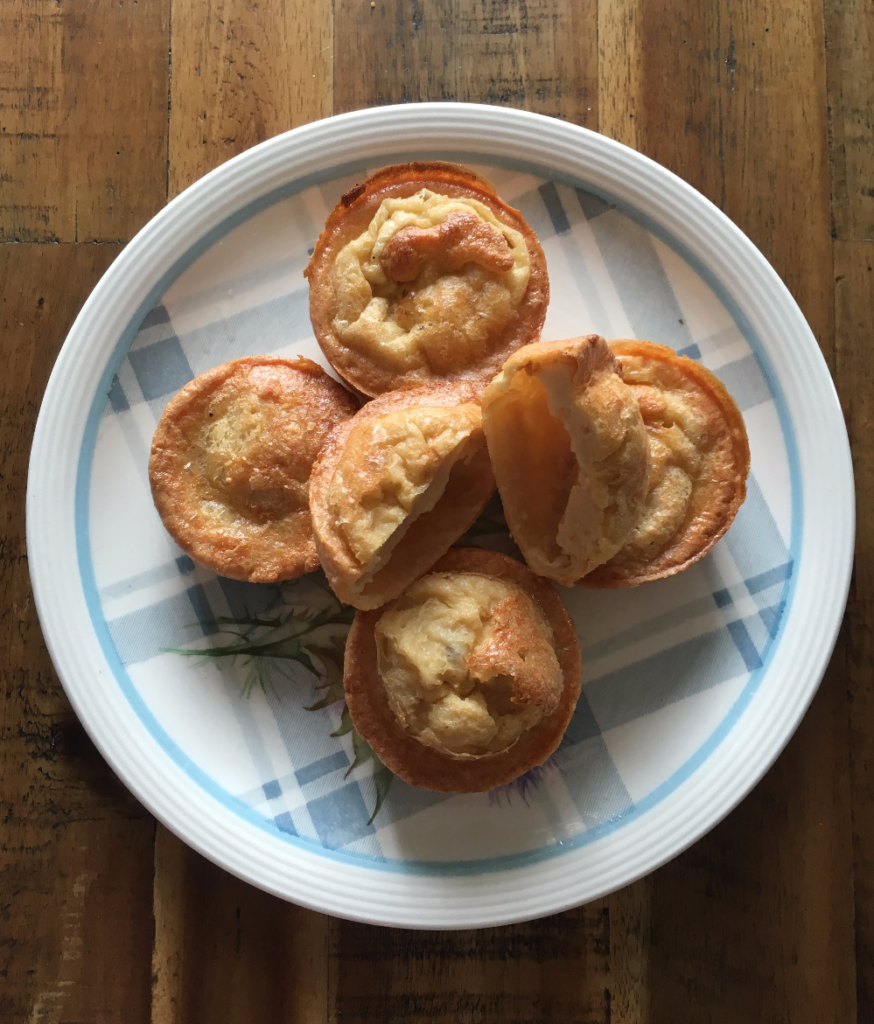
Welcome to another one of Faye’s ‘British Classics with a Twist’ series. I know there’s a British food theme going on here. But hey, you start with what you know, right? This time, we’re making Yorkshire Puddings – but specifically gluten-free Yorkshire Puddings. Why are we making them gluten-free? Well… because I want to eat them. And I haven’t been able to for years. So this is overdue!
Yorkshire Puddings aren’t the easiest things to cook. Successfully, that is. Even at the best of times, and when using wheat, it can still be tricky to get them to turn out right. Hence the extra cooking tips that I’m including in the recipe – because they’re needed!
So yes, it may look pretty straight forward with only a handful of ingredients, but trust me, PLEASE read the cooking tips. And make sure you follow them to a T.
These cooking tips have been tried and tested by my Dad for many years. He swears by them. You see, my Dad was the cook in our house. He cooked most of the meals and made most of the lunches. His tastes were pretty simple and straightforward, and he never deviated much from the traditional British staples – except to improve them.
I think he was most proud of his Yorkshire Puddings. He was very particular about his process and how they had to be done (I distinctly remember him lecturing me about using a wooden spoon!), but they always turned out amazing. In fact, we hassled him to make twice as many because they were so good!
So here I am borrowing his tips and tricks and putting my own spin on the classic Yorkshire Pudding recipe. Hope those of you with gluten and wheat allergies appreciate these as much as I do!
Yorkshire Puddings
Ingredients
- 25 grams quinoa flour
- 25 grams brown rice flour
- 50 grams tapioca flour
- 1/2 tsp salt
- 1 egg
- 300 ml soy/plant-based milk (ensure it's chilled)
Instructions
- Heat the oven to 240°C/465°F. Using a muffin tray, put a tbsp of sunflower oil into 6 of the cups and set aside while oven is heating.
- In a large bowl, sieve the flours and add the salt. Mix the flours together well using a wooden spoon.
- Make a well in the centre and drop in the egg. Using your wooden spoon, stir the egg in the centre and very gradually start to bring in some of the flour from the sides. Add a little bit of milk as you are doing this. Keep working until all the flour is mixed in and mixture is smooth – there should be no lumps. (You are aiming for a texture of thick paste).
- Slowly start to mix in the rest of the milk, bit at a time. Add only enough milk until you have the texture of single cream. Then beat for about 5-10 mins using your wooden spoon.
- Once done, put the mixture into the fridge to cool. At the same time, put the muffin tray into the oven and heat the oil until it is literally smoking hot.
- Take the mixture out of the fridge and quickly beat again for a couple of mins to get some fresh air into it. Then take the muffin tray out of the oven and QUICKLY pour about ½ cm thick of mixture into each of the cups. Once done, put the tray back into the oven straight away.
- Cook the Yorkshires in the oven for about 20 mins (or less), until they have risen and are golden brown. Once cooked, take out of the oven and allow to cool in the tray for about 5 mins before removing onto a paper towel (to soak up excess oil).
- Traditionally these are served with roast beef and gravy, but I say serve them with whatever you like! If you want to – have them on their own!
Notes
- It’s really important that you use a wooden spoon for this recipe. I’m not sure of the science behind it, but it seems to help make the mixture rise in the oven.
- But the main key to making these Yorkshire Puddings rise, is the contrast between the hot oil and the cold mixture. Keep your batter cool and the oil (and oven) hot, and ensure your pour the mixture into the cups as quick as you can before getting the tray back into the oven.
- Also, plant-based milk is strongly recommended for this recipe! Even if you’re not dairy free, I suggest using plant-based milk anyway (soy works really well), as the low saturated fat content makes the batter lighter, and helps it rise in the oven.

